#CI S1
Explore tagged Tumblr posts
Text


LAW & ORDER: CRIMINAL INTENT | 1.13 "The Insider" ↳ requested by @thefirsthogokage
#criminal intent#ron carver#alex eames#bobby goren#CI S1#lawandorderedit#userhann#userkraina#usertj#usermandie#tuserdana#tuserheidi#usermarina#usershades#ours#by holly#cinemapix#tvarchive#tuserhan#law and order criminal intent
88 notes
·
View notes
Text
I know I'm reblogging this again, but these gifs are all from such fantastic moments! Another great set, @bowserbabe !






law & order criminal intent - art
36 notes
·
View notes
Photo



#tgcf#tgcfedit#hua cheng#xie lian#hualian#tian guan ci fu#what if i rewatch s1 again#userkareena#heaven official's blessing#*#i miss them
685 notes
·
View notes
Text
I love how bitchy San Lang/Hua Cheng gets with literally everyone who isn't Xie Lian
#he's really the soft for exactly one person trope#hes a bitch and he owns ir#it#love to see it#tgcf#tian guan ci fu#heaven official's blessing#asra talks#anyway finally finished rewatching s1 so s2 here we go#san lang#hua cheng#hualian#xie lian
122 notes
·
View notes
Text
how deep was the comphet s1 nancy had that she willingly dated s1 steve
#will always be a s1 steve hater#like the epitome of a cis straight white man sorry not sorry#his hair was also ugly so she must’ve been in DEEP#nancy wheeler#anti stancy#steve harrington#stranger things#ronance#< target audience
110 notes
·
View notes
Text
*notices the s2 folder downloaded & catching dust while re-arranging some folders on the laptop*
suddenly decides that if i have to start watching tgcf s2 (after which i'll re-read the novel) right now, i need to go back & rewatch s1 to get into the vibe & tell me WHY i just slapped both of my hands upon my face as soon as I SAW THIS
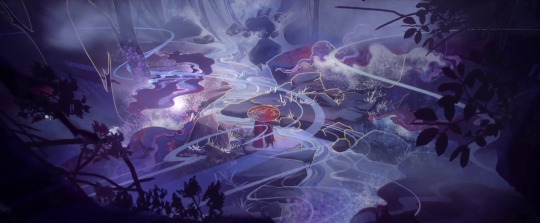
#felt like crying i think i almost sobbed too#the chokehold this scene has on me#and especially in the op of the s1 UGH#might spam while watching s2#let's go time to revisit my beloved loverboys#tgcf#tian guan ci fu#hualian
56 notes
·
View notes
Text
Tiān Guān Cì Fú Hanakotoba Analysis Part 2
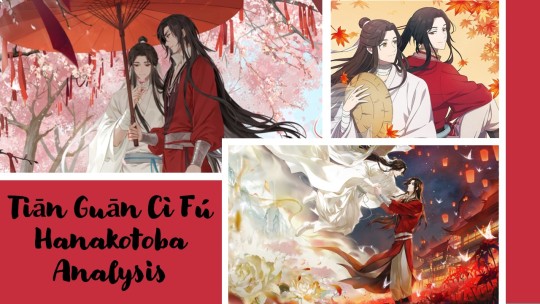
◤━━━━━━━━━◥𐀔◤━━━━━━━━━◥
-> 4) Lotus/Water Lily

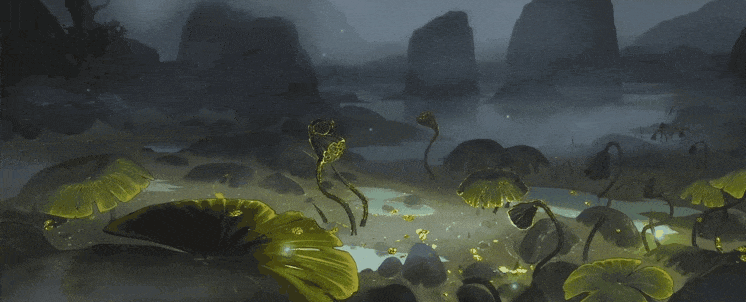
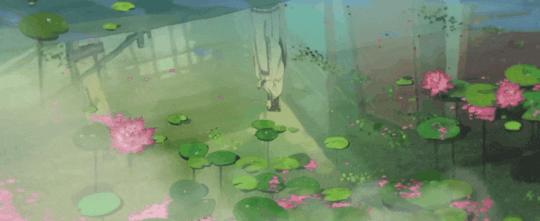
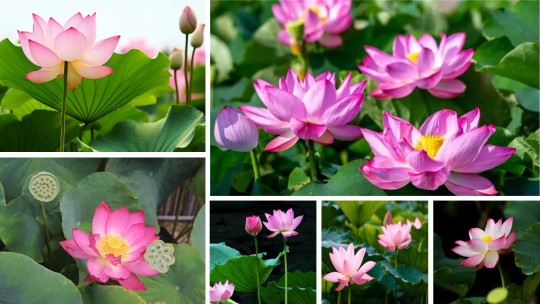
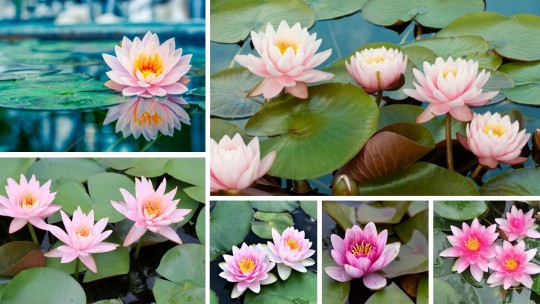
Despite having a few distinguishing characteristics, lotuses (Nelumbo nucifera) and water lilies (Nymphaea) are frequently mistaken for one another. As a result of this, their symbolic meanings frequently overlap to the point where they have the same connotations across certain cultures. Thus, for the duration of this post, I shall use both names interchangeably. In China, lotuses are known as lián huā (���花) or hé huā (荷花) while water lilies are known as shuìlián (睡莲) and héhuā (荷花). They are renowned as the gentleman's flower since they grow upwards pure and unstained from the mud. As a result of how it grows, this flower is associated with endurance, elegance, resilience, triumph over adversity and ultimate purity of mind and heart in China. The lotus is considered a sacred flower, embodying the essence of divine beauty and grace. It is also a symbol of moral integrity, emphasising the importance of maintaining inner purity and virtuous behaviour in the face of worldly temptations. In China, part of the lotus flower’s Chinese name “l蓮” (lián) is homophonous with the words “聯” (lián) meaning “to bind/connect as in marriage”; “戀” (liàn) meaning to love; and “廉” (lián) meaning modesty. This has resulted in the lotus flower symbolizing love, marriage and unions in Chinese culture. The lotus is thus a common motif in poetry, from the Tang and Song dynasties to contemporary works, and it is used to express love, convey feelings, and reflect on the state of humanity. A single stalk bearing two lotus flowers symbolises the yearning for harmony and a shared heart. This was derived from the fact that the “荷” (hé) in the lotus flower’s other Chinese name also means “union” and is homophonous with the word “和” (hé) meaning uninterrupted or one after another. In addition to this, a lotus bloom complete with a leaf and bud represents a complete union. Water lilies are often used in bridal bouquets because they are considered a lucky charm and symbol of 100 years of love in China. The word “l蓮” (lián) also sounds similar to “連續” (liánxù) which means continuous. This conveys the idea of constant growth and spiritual progress thus making the lotus a symbol of the continuous pursuit of knowledge, wisdom, and enlightenment. Lotus flowers symbolize purity, wisdom, peace, perfection, humility, enlightenment and rebirth in various Asian cultures because of their strong connection to Buddhism. The lotus is commonly used as a metaphor for the path to enlightenment in Buddhist literature. In the same way, as lotuses arise from the murky depths of ponds and lakes, pure and uncontaminated by the pollutants of their surroundings, so too are humans capable of rising above the obstacles and temptations of the outside world to achieve enlightenment and spiritual purity. The lotus is compared to the pure soul in South Asian Ismaili literature. There is a poem that highlights the beauty of the lotus, noting how its delicate white petals remain pure and attractive despite their murky surroundings. Similarly, a pure soul is both part of and not of this world, much like the lotus's surroundings. The lotus has deep symbolic meaning in Taoism, such as representing peace, balance, and the interaction of the natural and human worlds. It is a strong metaphor for the "interconnectedness of all things and the inherent harmony within the universe". The serene beauty of the lotus flower and its adaptability to many environments are representative of the Taoist concept of living in harmony with the natural order of things, flowing with life's rhythms, and maintaining balance in the face of change. In Taoist philosophy, the lotus is also connected to transcendence and immortality. Its enduring cycle of life, death, and rebirth is symbolised by its capacity to regenerate and blossom year after year in spite of the changing seasons. The lotus is a representation of transcendence and spiritual development that guides individuals towards a state of inner immortality and connection with the divine.
In Japan, lotuses are called ren (蓮) or hasu (はす) while water lilies are called suiren (睡蓮). In hanakotoba, lotuses symbolise eloquence, detached love, sacredness and a pure heart. They are also associated with rebirth, purity, transformation, renewal, spiritual enlightenment and resurrection as well as beauty, grace and perfection. In hanakotoba, water lilies symbolise a pure heart, faith and trust. In Western floriography, water lilies symbolize purity of the heart, virtue, innocence, achieving great things, beauty rising from humble beginnings and bringing together separate things. Pink waterlilies in particular are often associated with feelings of admiration. Since its scientific name was derived from the Greek nymph, water lilies while a symbol of beauty also has a dangerous side in addition to being a symbol of unity and balance. Lotuses can also symbolize estranged love as well as eloquence in floriography.
Despite a certain someone’s trials and attempts to corrupt Xie Lian in order to mould him into a perfect successor, the latter remained firm in his beliefs—"I just won’t change! Even if it’s painful I won’t change, Eve if I die, I won’t change, I will never change!” (MXTX, p. 1937). This ties in with the lotus flower’s symbolism of “rising above obstacles and temptations of the world to reach enlightenment and spiritual purity”, “triumph over adversity” and “maintaining balance in face of change” as well as “ultimate purity of mind and heart”. The lotus flower’s symbolic meanings of humility, virtue, resilience and constant growth complement Xie Lian’s character after his third ascension while its meanings of perfection, divine beauty, grace, and purity complement his character before and during his first ascension. The lotus flower’s symbolic meanings of perfection, virtue, divine beauty, grace, and purity complement his character before and during his first ascension while its meanings of humility, wisdom, resilience and constant growth complement Xie Lian’s character after his third ascension. The lotus is a highly revered flower in both Taoism and Buddhism, and both have served as inspiration for the basis of Tiān Guān Cì Fú’s complex setting and lore. The lotus flower’s symbol meanings of “transcendence and immortality”, “divine beauty and grace”, “unity and balance”, “the cycle of life, death and rebirth” as well as “rising above obstacles and temptations of the world to reach enlightenment and spiritual purity” are all recurring motifs in Tiān Guān Cì Fú. Additionally, the lotus’ symbolism of longstanding love and feelings of admiration tie into Hua Cheng and Xie Lian’s relationship. A single stem bearing two lotus flowers denotes a desire for harmony and a shared heart. To share someone’s heart is to completely understand, accept and support them. Xie Lian professes his desire to understand Hua Cheng—"I want to understand your everything" (MXTX, p. 943)—while Hua Cheng states at the end of the book, "I understand your everything. Your courage, your despair, your kindness, your pain, your resentment, your hate, your intelligence, your foolishness” (MXTX, p. 1953). Xie Lian is completely enamoured by Hua Cheng and wants to be someone he can confide in and rely on. While Hua Cheng not only adores Xie Lian but fully understands him and accepts every part of him. As a heavenly official and a supreme ghost king respectively, Xie Lian and Hua Cheng's union brings together the heavenly and ghost realms—which embodies the lotus' symbolism of unity, balance and bringing together separate things. Throughout various cultures, the water lilies and lotuses repeatedly symbolize gracefully overcoming adversity as well as embodying the essence of divine beauty and grace; because they grow pure and unstained by the mud in which they grow. This sentiment is reminiscent of one of the most famous quotes in Tiān Guān Cì Fú which was said by both Xie Lian and Hua Cheng—“The one standing in infinite glory is you; the one fallen from grace is also you. What matters is ‘you’ and not the state of you” (MXTX, p. 943 & 1438 & 1930).
-> 5) Autumn Ginkgo & Maple Trees
In the scene wherein Xie Lian meets “San Lang” for the first time, there are Ginkgo (Ginkgo biloba) and Maple trees (Acer) present in the background. Their vibrantly coloured leaves cascade onto the pair as they converse, creating a picturesquely autumnal setting. A ginkgo tree is also present in the scene where Xie Lian speaks to other heavenly officials via the communication array while maple trees are featured in many pieces of official artwork for the donghua.
5.1) Ginkgo
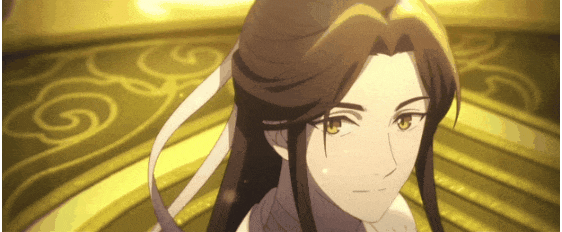
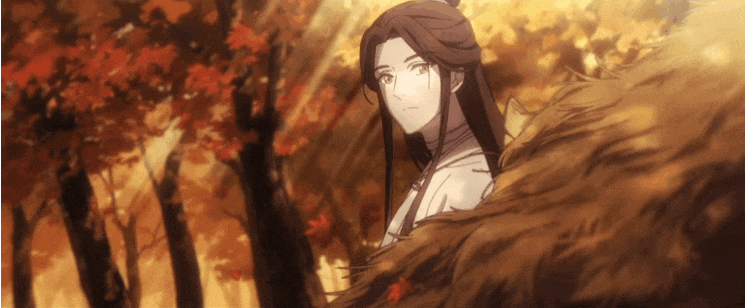

Ginkgo trees are known as yínxìng (銀杏 ) in China and are the country’s national tree. In Chinese culture, ginkgo trees are highly symbolic of longevity, endurance, resiliency, and hope. The ginkgo's symbolic meaning is said to be derived from the tree’s ability to survive under the harshest conditions as well as its long lifespan. When displayed as a single tree, it stands for strength and solitude. In Japan, ginkgo trees are called ginkyo (銀杏) and symbolise magnificence, longevity, requiem, strength, hope and peace in hanakotoba. In Western floriography, ginkgo trees symbolise solemnity, longevity and requiem. The beauty and symbolism of the ginkgo tree are valued by many European cultures, who associate it with power, resilience, human progress, enlightenment, and memory enhancement. The ginkgo tree also represents renewal as shows off a magnificent colour display each autumn as it sheds its leaves to sprout new ones. Even if he denies it—"Don’t think someone overly perfect... If it’s just watching a shadow from afar and never having to interact, then whatever. But once acquainted and grown close, you will find that this person was not what you had imagined; maybe the complete opposite. When that happens, you will be completely disappointed” (MXTX, p. 445)—Xie Lian embodies the qualities of hope, peace, strength, and resiliency. Hua Cheng, on the other hand, sees Xie Lian as the embodiment of hope—"You never know. I don't care if anyone else is disappointed. But to some, the very existence of a certain person in this world is in itself, hope” (MXTX, p. 445). Which encapsulates the symbolic meanings of the Ginkgo tree: strength, hope, resilience, peace, and perseverance.
5.2) Maple


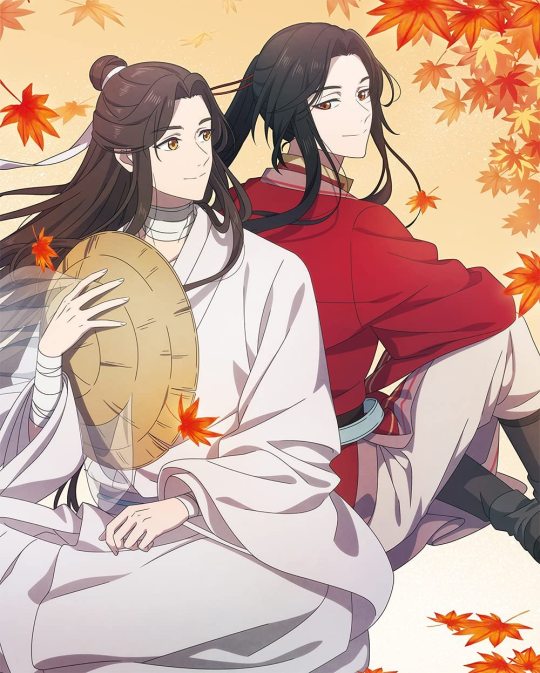
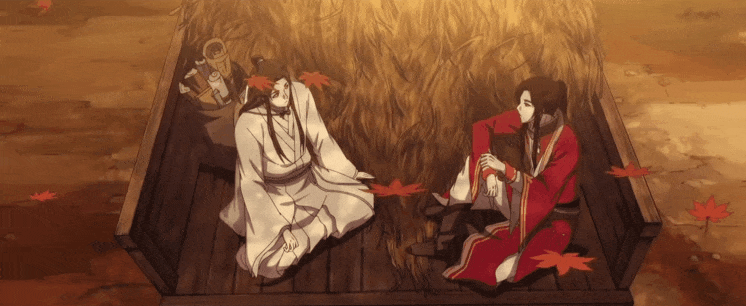
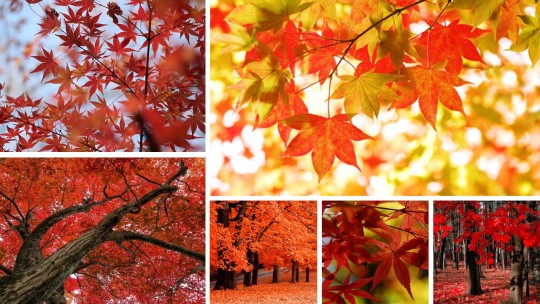
“Looking up they were traversing through a maple grove, a sea of flaming red in a field of green. The rustic charm of the mountainous countryside, with fresh grass that refreshed the mind, was extremely intoxicating. But, Xie Lian could not help but give a slight start. A long time ago, in his youth, when he cultivated at the Royal Holy Pavilion, the entire mountain of maple was like this: shimmering like gold, intense like fire. The unforgettable sight before him now inevitably took him on a trip down memory lane” (MXTX, p. 117). Maple trees are known as fēngshù (楓樹) in China and primarily represent the passage of time and seasonal change. Furthermore, maple trees have traditionally been associated with abundance and positive energy in Chinese Feng Shui. These trees are thought to denote growth and prosperity. This is partly because red is considered an auspicious colour in China and is thought to bring good luck and happiness. Maple leaves and bark are also frequently used as materials in Taoist spells for drawing out courage, wealth and luck as well as for healing and attracting love. The maple tree is also a symbol of enduring love since it is frequently associated with loyalty and durability. Hence, maple leaves are connected to marriage and love in China. In Japan, maple trees are known as kaede (楓) and symbolize precious memories, restraint and beautiful change in hanakotoba. In addition to this, they also symbolize endurance, strength, resilience, transformation and change. The reason why maple trees are associated with change and transformation is because their leaves change colour with the seasons, morphing from green to yellow, orange, and red. This vibrant range of colors also represents the passing of the seasons, the changing nature of life as well as the beauty and fragility of life. In Japanese culture, the maple tree's five-lobed leaf is a representation of wealth and good fortune. Throughout various Asian cultures, maple trees are associated with persistence and stability, expression and passion, power and regality, endurance and strength as well as determination and resilience. In Western floriography, maple trees are associated with peace, serenity, reservedness, unity, humility, strength, endurance, balance, wisdom, and promise as well as seasonal change and new beginnings. The maple tree has also been utilised as a symbol of passion and desire in literature and art. Its vivid, crimson autumnal leaves represent the intensity of love, while its sturdy roots represent the deep bond between two individuals. While the tree's ability to endure adverse weather represents the tenacity and endurance required in romantic partnerships. Maple trees have been used as an enduring symbol of the transformational power of love in several literary and artistic works. Although roses and doves are more commonly linked with love, maple trees perfectly encapsulate the intense emotion and raw intensity of love. Red maple trees are one of Tiān Guān Cì Fú’s signature motifs because of their use during the scene where Xie Lian meets San Lang—“The cart was driving through the forest of flaming red maples, where maple leaves danced their way to the ground. A leaf playfully landed on the shoulder of the youth, and he blew it off softly, then looked up at Xie Lian, speaking with a shadow of a smile” (MXTX, p. 119). As a result, the use of maple trees in this scene greatly contributes to the romantic atmosphere. Hua Cheng's tremendous devotion to Xie Lian is foreshadowed by the maple tree's connotation of passionate, enduring love and devotion. Considering red is Hua Cheng's signature colour, having Xie Lian surrounded by a veritable sea of red sets the intimate cosy ambience needed for this scene.
-> 6) Red Spider Lily
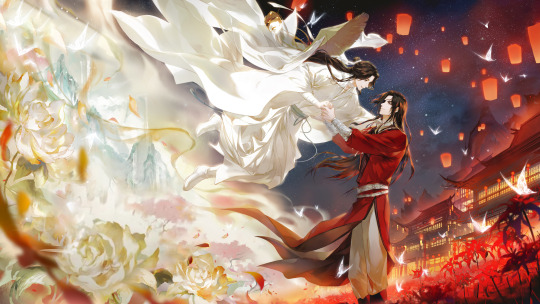
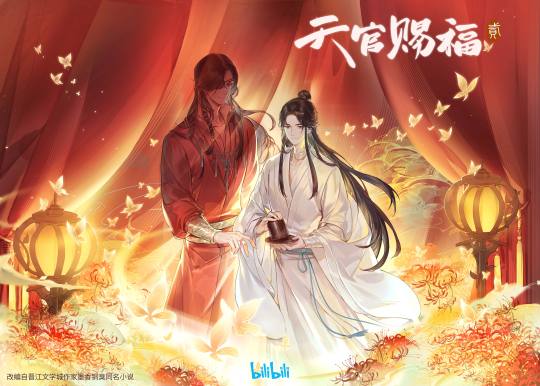
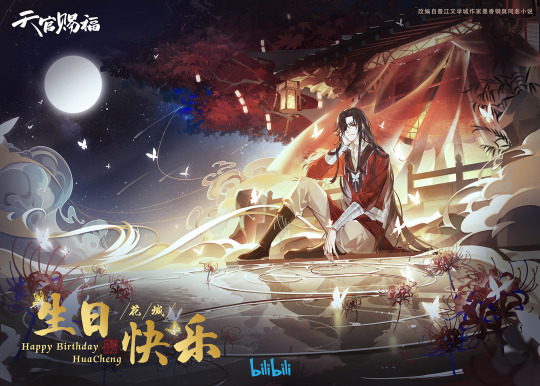
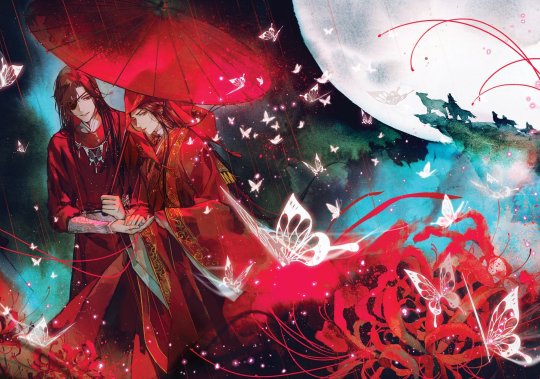
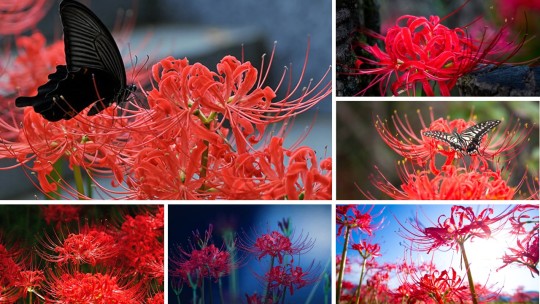
The red spider lily (Lycoris radiata) is known as mànzhūshāhuá (曼珠沙華) or the bǐ'ànhuā (彼岸花) in China and is a symbol of autumn. The flower is also regarded as a symbol of both death and rebirth. Red spider lilies are described as flowers that grow in hell in the Lotus Sutra. As a result of this, certain Buddhist traditions in China and Japan believe that these flowers aid spirits in crossing from the afterlife into reincarnation. The red spider lily also represents beauty because of its vivid, vibrant red blossoms, which give a sense of elegance. In Chinese culture, the red spider lily has a long history and is commonly associated with death and funerals. It is considered bad luck in some parts of China to keep this plant in your home since it is thought to attract ghosts. The flower's sad symbolism for loss and parting is based on an ancient Chinese legend about two elves, Saka and Manju, who were the guardians of leaves and flowers, respectively. They could never meet, however, because the red spider lily never sprouts flowers and leaves at the same time. They both yearned to meet one another, and they violated the gods in order to do so. The gods punished them harshly for this and separated them for eternity. The flower is still associated with loss, both of loved ones and of memories. In Japan, these flowers are known as higanbana (彼岸花) which means autumn equinox flower. They represent sad memories, resignation, independence, lost memory, abandonment, passion and those who are never to meet again in Japanese hanakotoba. The red spider lily is also associated with death, goodbyes, rebirth and the far shore (land of the dead). The red spider lily's symbolic meaning of farewells and rebirth is embodied in classic Japanese artworks depicting mythological situations, where they are referred to as the "flowers of heaven.“ In Japan, there is a strong correlation between the Buddhist and Shinto religions and red spider lilies. These striking flowers are thought to represent rebirth and the transience of life. They are also believed to guide the deceased's spirits transition to the afterlife. They are frequently observed blossoming next to cemeteries or other holy locations. They are also thought to have protective properties that shield against negative energy and evil spirits. Red spider lilies are also thought to symbolise the boundary between life and death in Japanese culture. This is because its flowers bloom during autumnal equinox when Japanese Buddhists believe that deceased people's spirits return to the near shore (the world of the living). Some legends claim that when an individual crosses paths with someone they will never see again, red spider lilies blossom alongside their path. These legends are partly responsible for the flower's affinity with final goodbyes, in addition to its association with death and the hereafter. Despite their frequent association with death and parting, red spider lilies are also admired for their beauty and resilience. They can survive in a range of challenging environments, including rocky and riverside locations, and their vivid red hue helps them stand out against the surrounding scenery. As a result of this, these flowers can also be seen as a symbol of strength and perseverance in the face of adversity.
Red Spider Lilies greatly complement Hua Cheng as only only are they his signature colour but are also associated with death, rebirth, longing, parting, loss and passion which are all traits associated with him. Hua Cheng has effectively died three times and has come back three times which ties into the flower’s association with the transience of life, death and rebirth. Red spider lilies are also seen as a symbol of passion, strength and perseverance in the face of adversity which fits Hua Cheng’s character. In some official artwork such as the one shown above, red spider lilies are associated with Ghost City. This is fitting considering the red spider lilies symbolise the boundary between life and death whereas Ghost City is said to be “the most prosperous place within the ghost realm, situated right at the crossroads of the mortal and ghost realms” (MXTX, p. 287).
◣━━━━━━━━━◢𐀔◣━━━━━━━━━◢

╰┈➤ Part 1 ✿
╰┈➤ Anime Hanakotoba Posts Directory
[Forgive me if I missed anything; I attempted to include everything featured in the donghua, novel and official artwork. There was a lot I wanted to say, but I could not articulate it all as eloquently as I wanted to… I wanted to go all out for this while also keeping it as brief as possible… So, forgive me if this is just tons of gibberish. I always find that I can say and write a lot about the things I like but always find myself inadequate when speaking and writing about the things I truly love. Hopefully, I did this masterpiece justice.
If you liked this post, check out my other hanakotoba analysis posts... Also, if I've gotten any of the kanji, romaji, hanzi or pinyin incorrect, feel free to correct me]
#tgcf#tian guan ci fu#mxtx#mxtx tgcf#mo xiang tong xiu#donghua#danmei#anime#anime hanakotoba#hanakotoba#floriography#hanakotoba analysis#tgcf donghua#tgcf season 2#tgcf s1#tgcf s2#heaven official's blessing#hualian#hua cheng#xie lian#san lang#sanlian#hua cheng x xie lian#hua cheng/xie lian#huaxie#manhua
80 notes
·
View notes
Text
how i view the tma s1 cast
Martin - Trans man
Sasha - Trans woman
Jon - Trans masc (for now)
Tim - Token cis friend
25 notes
·
View notes
Text
I’m loving the ‘60s ineffable wives art, especially the many takes on Crowley. I firmly believe she has worn every single outfit I’ve seen fanart of. But Aziraphale has spent centuries slowly collecting his favourite clothing pieces. In contrast to Crowley, he’s barely changed his hair in 6000 years. When presenting femininely, I doubt her look would change super significantly. She’d at least keep her usual vest.
#also begging people to stop changing their body types. s1 female presenting crowley didn’t suddenly have breasts and hips#i don’t think either character much cares about passing as cis#if i can find the time and energy‚ i’ll draw my own take#good omens#aziraphale#ineffable wives#original post#this post isn’t a spoiler but just in case somebody doesn’t want behind the scenes info i’m going to tag#good omens spoilers
31 notes
·
View notes
Text
Tgcf donghua I miss u……
#yes I finished the ep like one minute ago and I already miss it#last ep was great tho rlly#can we get a special ep like w s1 or something…#tian guan ci fu#donghua#b.txt
11 notes
·
View notes
Text






ALEX EAMES & BOBBY GOREN LAW & ORDER: CRIMINAL INTENT 1.11 "The Third Horseman" ↳ requested by @pesoplumagf
#userhann#andremichaux#usertj#usermandie#tuserdana#userjsmn#usermarina#usershades#captkatecastle#cinematv#cinemapix#law and order criminal intent#criminal intent#alex eames#bobby goren#CI S1#requests#ours#by holly
192 notes
·
View notes
Text
🤍❤️🤍❤️🤍❤️🤍❤️

Good lord- oh my
Ming yi makes me feel stuff, like idk I just want to her to hold me and kiss me- idk, I don’t actually know what his male body looks like but that doesn’t matter, women pretty💗
#tian guan ci fu#heaven official's blessing#ming yi#earth master#tgcf#my pansexual heart can’t handle this#Also why did it take me a week to watch s1 but it took me 4months to read book1#I’m only 146 pages away from finishing the second book which is surprising because I started the book last night#I’m very bad at reading#I can’t use the excuse that English isn’t my first language because it’s the language I speak the best??
13 notes
·
View notes
Text
trans characters in idol stuff are... not fun usually. like either the fanbase is transphobic and ppl make up excuses as to why theyre not actually trans (literally seen a LOT of ppl from a... certain fanbase say a trans character isnt actually trans bc she lives in japan. like... HUH???), OR the english translation is transphobic (...proseka trying to make mizuki seem like shes a crossdressing boy even tho her friends all v clearly see her as female). not to mention the original text usually being some kind of transphobic or just a lil ignorant, writer changes dragging trans characters down etc...
#thank god for zombie land saga... a beacon of hope in the mire of shitty treatment of trans characters#playin proseka again and there was an announcement where mizuki was consistently referred to as they/them/their. like... huh????#its like... even if she does end up being nonbinary i rly dont think she wouldnt use feminine pronouns??#nd pripara fans... always on the back of my mind. just bc reona goes to a japanese school doesnt make her cis 😭😭#nd u cant judge s1-3 based on info from idol time. u cant retcon transness u can just be bad at writing character continuity
9 notes
·
View notes
Text
la conferma della s3 mi ha portato a pensare ai possibili (e allucinogeni) scenari futuri, e a riflettere sul fatto che la storyline di manuel - ora che l'argomento sessualità è stato accantonato - sia già stata conclusa in un arco narrativo relativamente breve e quasi privo di conflitti: ha ritrovato suo padre e scoperto di avere una sorella, con cui è in buoni rapporti; proprio in virtù di detto padre, non ha più problemi economici; ha una famiglia allargata che gli vuole bene e una ragazza che ricambia i suoi sentimenti. insomma, tutti i piccoli pezzi di puzzle che caratterizzano il suo personaggio sembra siano stati messi in ordine (seppur ad mentula canis). cos'altro rimane?
non so, sento che in questa stagione abbiano completamente stravolto il ritmo narrativo - già rapido di suo - per concentrare quanti più elementi possibili in un mappazzone che avrebbe potuto tranquillamente essere diluito tra la s2 e la s3.
#un professore#che poi è un discorso applicabile praticamente a tutti i personaggi protagonisti simone compreso *#*sessualità: accettata; rapporti col padre: risanati; ragazzo che lo ama: trovato; hotel: trivago#è vero che gli abbiano portato via mimmo ma il personaggio 'simone balestra' ha comunque risolto i loose threads posti come base dalla s1#perciò spero che il ritorno di mimmo sia super tranquillo e non ci ricamino sopra troppi drammi#anche perché l'ennesima sottotrama criminale non la reggo basta#ok rant over
6 notes
·
View notes
Note
Is genlock still worth watching?
I think this depends on what you're expecting. If you're a hardcore mecha fan, it might be a little generic, but as a general 'just consumes whatever media is cool' then I think it absolutely is.
I'd also wanna clarify when I say that, it is specifically referring to season 1, and if you're up for it, the DC comics and the Storm Warning novel. Under no circumstances is season 2 worth watching. Please don't do that to yourself.
But season 1?
Stellar voice cast and acting, great balance of seriousness and humor, cool ass mechs and amazing found family of diverse characters with actual good representation. I mean what other series has their main cast consisting of a Black disabled lead, an Iranian fighter pilot who is canonically Muslim, a scrappy teenaged hacker dealing with the actual ramifications of being thrown into traumatic experiences, a Japanese soldier who doesn't fight under some stereotypical honor code, and a genderfluid person who's identity is important to their story, but not the focus of their existence. Even the secondary cast have a good mix of representation too. And David Tennant. Who doesn't love David Tennant.
Even with most of their casting they actually did pretty well on representing the range of diversity they portray. Val/entina being voiced by a NB actor, and Kazu, Chase and Yaz voiced by actors from their respective cultures. Cammie and Weller are just stellar.
The characters are wonderfully nuanced, with their cultures and backgrounds playing important roles through their stories without it being stereotypical or forced. Though the world building as a whole is kept somewhat vague I assume due to runtime, just something to keep in mind.
It honestly is the biggest let down that season 2 went back on all of that development and reduced every character down to stereotyped tropes, but season 1? Absolutely worth imo.
#genlock#gen:lock#pond soup#gl:pond#Genlock literally does not have a single straight white cis man on their main roster.#Also as a genderfluid person myself Val/entina's portrayal in S1 makes me so freaking happy
4 notes
·
View notes
Text
it's 2am and I have plans for tomorrow (today at this point) and yet instead of being asleep I'm just laying awake, setting my phone aside to give sleep another try only to grab it again and aimlessly read fanfiction
So. Typical Sunday night for me
#My brain does this thing where the more I need sleep the more awake I am#I need to watch Young Justice cuz recently I've re-entered my obsession with Nightwing#I've watched season one literally countless times#Yet however long that it's been since s3 was released I haven't been able to watch#That show was literally my life when I was 12#Young Justice and every series of Star Trek except enterprise#Hot take but enterprise really seemed like it was made by straight Cis men for straight cis men#Anyways I've always ended up daydreaming more about the Young Justice universe than the star trek one#I've had an ongoing plot of maladaptive daydreaming for YJ for 9 years now#The time skips between seasons is great bc I very much had a crush on og robin#And it was really weird when I realized that I was closer to s2 nightwings age than s1 robin#I think that I'm actually older than s2 nightwing at this point though?#Smashmouth really got it right when they said the years start coming and they don't stop coming#I've been having a nonstop existential crisis about the passage of time for the last 4 years#I had this fucking tumbler account 4 years ago#And that's just so wack to think about#Cat rambles
4 notes
·
View notes